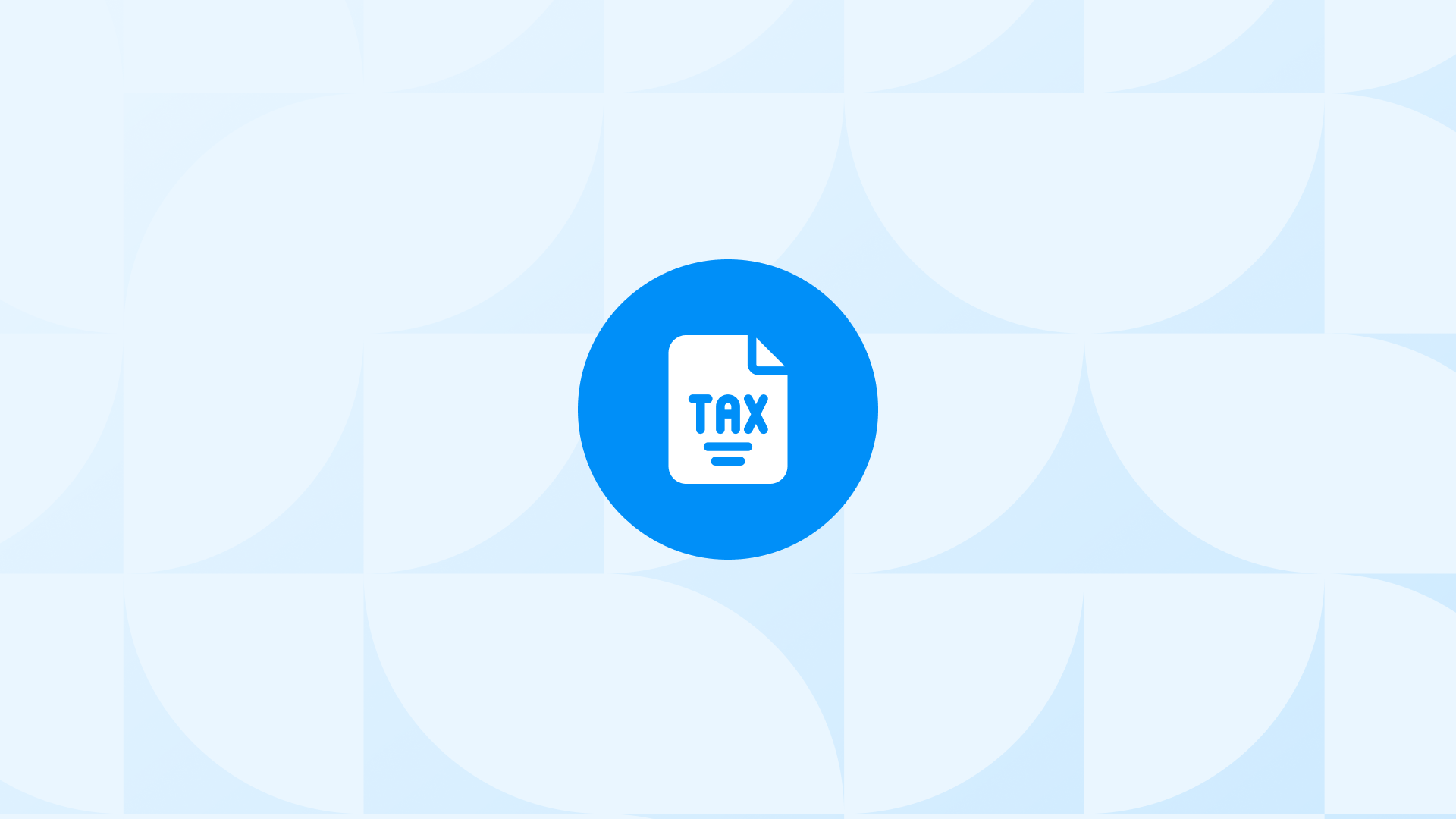Understanding UK Tax Rules for Ecommerce Businesses is essential for ensuring compliance and optimizing tax liabilities.
In this guide, we will cover:
- Value Added Tax (VAT)
- Corporate Tax
- Income Tax
- National Insurance Contributions (NICs)
- International Considerations
- FAQs on UK Ecommerce Business Taxes
- Glossary of Tax Terms for UK Ecommerce Businesses
Here’s what you need to know about each tax type for ecommerce businesses.
Value Added Tax (VAT) for UK Ecommerce Businesses
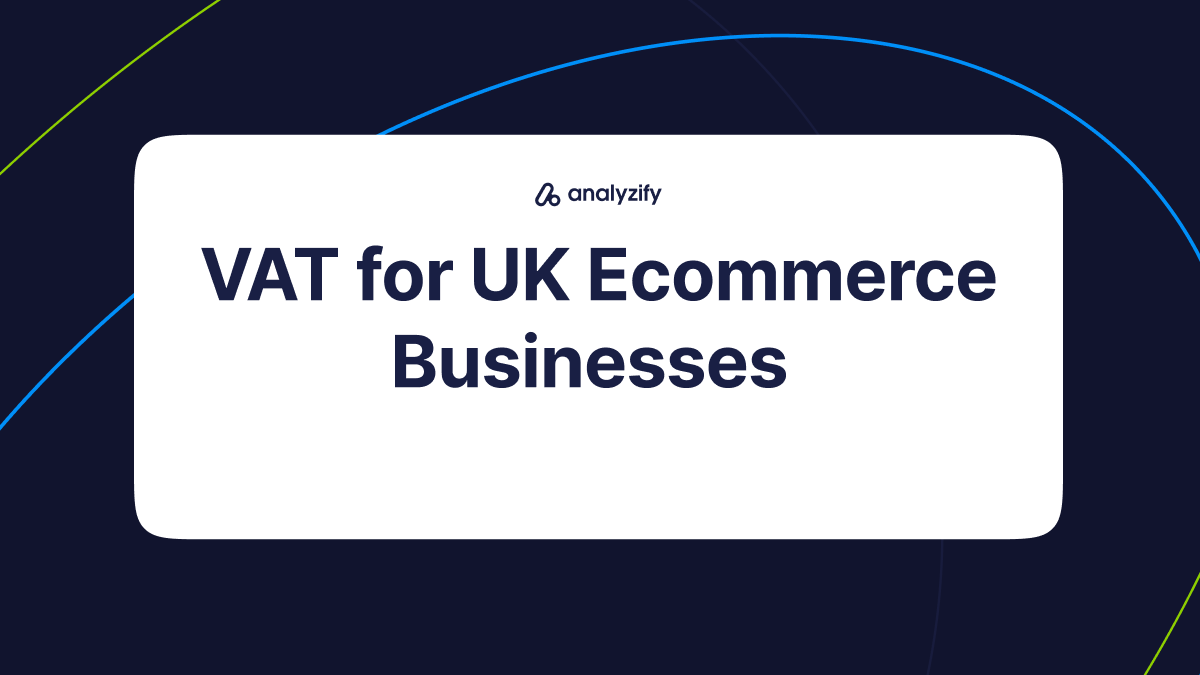
Value Added Tax (VAT) is a consumption tax levied on the sale of goods and services in the UK. It is an indirect tax, meaning that it is collected by businesses on behalf of the government and then paid to HM Revenue and Customs (HMRC).
VAT is added to the price of most goods and services sold by VAT-registered businesses.
Registration Thresholds
A business must register for VAT if its taxable turnover exceeds the VAT registration threshold, which is £85,000 per year.
Businesses can also voluntarily register for VAT if their turnover is below this threshold. Once registered, businesses must charge VAT on their sales and can reclaim VAT on their purchases.
How to Charge and Collect VAT
VAT rates in the UK include:
- Standard Rate (20%): Applies to most goods and services.
- Reduced Rate (5%): Applies to certain goods and services, such as children’s car seats and home energy.
- Zero Rate (0%): Applies to goods like books, newspapers, and children’s clothing.
To charge VAT, businesses must:
Add VAT to the price of their goods or services.
Issue a VAT invoice showing the VAT amount.
Collect the VAT from customers.
Record all sales and VAT collected.
VAT Returns and Payments
VAT-registered businesses must submit regular VAT returns, usually quarterly, to HMRC. A VAT return summarizes the total sales and purchases, the amount of VAT owed, and the amount of VAT reclaimable on purchases.
The business must pay the difference between the VAT collected and the VAT reclaimable to HMRC.
Steps for filing VAT returns:
-
- Calculate the total VAT collected from sales.
- Calculate the total VAT paid on business purchases.
- Submit the VAT return online through the HMRC website.
- Pay any VAT owed to HMRC by the due date.
For more information you can click here.
Additional Information on VAT for Ecommerce Businesses
Post-Brexit VAT Rules
After Brexit, the UK is governed by its own VAT rules. For businesses in Northern Ireland, the situation is different. Northern Ireland remains aligned with EU VAT rules for goods, while UK VAT rules apply to services. This distinction is important for ecommerce businesses operating in or dealing with customers in Northern Ireland.
Charging VAT Within the UK
The standard VAT rate within the UK is 20%, which applies to most goods and services. However, there are reduced and zero rates for specific goods and services. For example, children’s items and books are often subject to reduced or zero VAT rates.
Ecommerce businesses need to be aware of these variations to ensure they charge the correct VAT rate on their products.
Charging VAT Outside the UK For sales to customers outside the UK but not in the EU, goods are typically zero-rated for VAT purposes. Although the rate is 0%, these sales must still be recorded and reported.
For distance sales to EU customers, businesses must charge VAT if their total sales exceed the EU-wide threshold of €10,000.
To simplify reporting, businesses can use the One-Stop Shop (OSS) Union scheme, which allows them to report and pay VAT in one EU country rather than registering in each country where they have customers.
Special Rules for Digital Services When it comes to digital services, the rules vary depending on the customer’s location. For UK customers, digital services are liable to UK VAT.
For EU customers, businesses must register for VAT in the respective EU country and charge that country’s VAT rate.
This ensures compliance with the different VAT regulations across the EU.
For more information you can click here.
Corporate Tax for UK Ecommerce Businesses
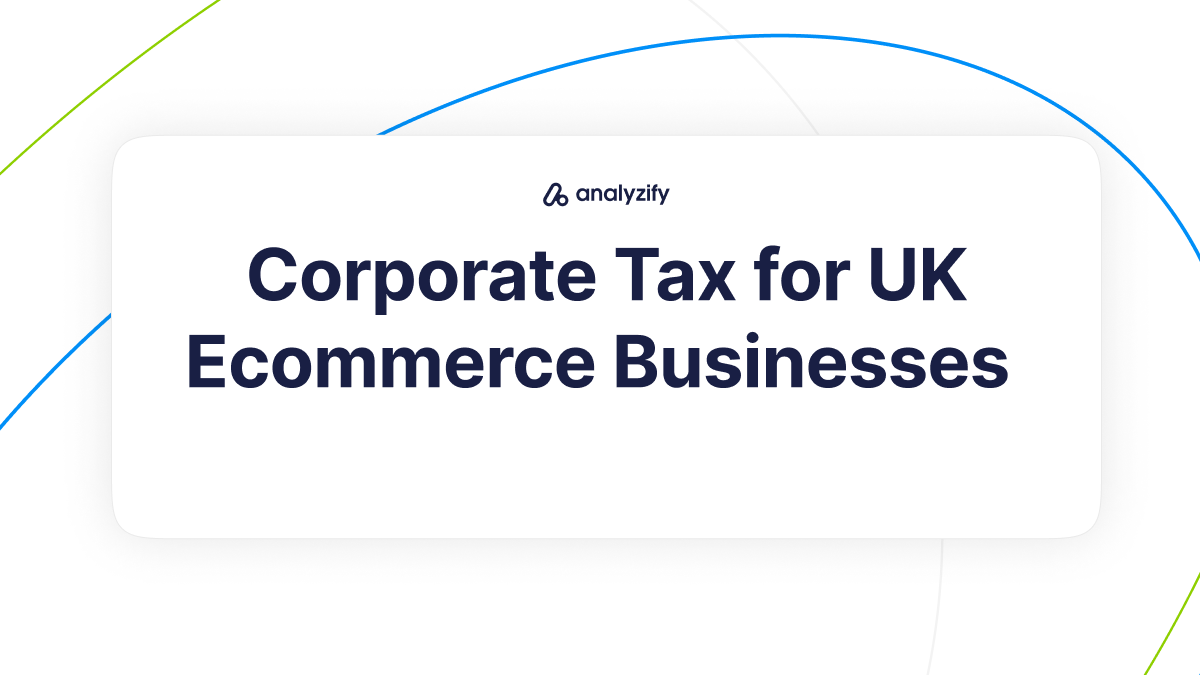
Corporate Tax is essentially the tax bill for a company, much like how individuals pay personal tax. For ecommerce businesses, Corporate Tax is calculated based on the net profit made from online sales after deducting allowable expenses and reliefs.
There are specific laws surrounding Corporate Tax, but in essence, it is the company’s tax on profits.
Tax Rates for Companies
The current Corporate Tax rate for UK companies with profits under £50,000 is 19%. For profits over £250,000, the rate is 25%.
For profits between £50,000 and £250,000, a marginal relief applies, providing a gradual increase in the effective Corporation Tax rate.
Companies must pay their Corporate Tax within nine months and one day after the end of their accounting period.
Filing Corporate Tax Returns
Filing Corporate Tax returns involves several essential steps:
Determine the Accounting Period: This is typically 12 months.
Prepare Annual Accounts: These accounts should detail the company’s financial performance, including income from online sales and deductible expenses.
Calculate Taxable Profit: This involves adding up all income from ecommerce activities and subtracting allowable expenses and reliefs.
Submit the Tax Return: Companies must file their Company Tax Return (CT600) online using HMRC’s services or approved software.
Pay Corporate Tax: The calculated Corporate Tax amount must be paid by the due date.
It’s important to note that the taxable profit can differ from the accounting profit due to various adjustments.
An accountant usually prepares these figures according to accounting standards and then translates them into a Corporate Tax return.
Both the accounts and the tax return are submitted electronically to HMRC.
For small businesses, the Corporate Tax payment is due nine months and one day after the end of the accounting period. For example, if the accounting period ends on March 31st, the tax payment is due by January 1st of the following year.
Allowable Deductions and Reliefs
Ecommerce businesses can reduce their Corporate Tax liability through various deductions and reliefs, including:
Business Expenses: Deductible expenses specific to ecommerce businesses include web hosting fees, payment processing charges, advertising costs, shipping expenses, and salaries.
Capital Allowances: Businesses can claim capital allowances on assets such as computers, servers, and office equipment, which reduces their taxable profit.
Research and Development (R&D) Tax Credits: If the business is involved in developing new technologies or innovative projects, it may be eligible for R&D tax credits, significantly lowering the tax bill.
Annual Investment Allowance (AIA): This allows businesses to deduct the full value of qualifying items like IT infrastructure and machinery from profits before tax, up to a certain limit.
Loss Relief: If the business incurs a loss, this can be carried forward to offset against future profits, reducing future tax liabilities.
Time to Pay Service
If an ecommerce business cannot pay its Corporate Tax bill on time, HMRC offers a “Time to Pay” service. Businesses can arrange to pay their tax bill in installments, usually over 12 months. It is essential to contact HMRC if you foresee difficulties in making payments to avoid penalties.
Payment Methods
The easiest and most cost-effective way to pay Corporate Tax is online via online banking. It is crucial to use the correct reference number provided by HMRC to ensure the payment is allocated correctly.
Reducing Your Tax Bill
To minimize your Corporate Tax bill legally, it is essential to take advantage of all available deductions and reliefs. Working with a knowledgeable accountant can help ensure you are paying the correct amount of tax and not overpaying. Using cloud accounting software can also provide up-to-date figures to help plan for tax payments throughout the year.
Key Points to Remember
- Accurate Records: Keep detailed financial records of all ecommerce transactions, expenses, and income to ensure accurate tax calculations.
- Utilize Reliefs and Allowances: Take full advantage of available deductions and reliefs to minimize the business’s tax liability.
- Stay Compliant: Adhere to filing and payment deadlines to avoid penalties and interest charges from HMRC.
By understanding and effectively managing Corporate Tax obligations, ecommerce businesses can optimize their tax liabilities and ensure compliance with HMRC regulations.
Income Tax for UK Ecommerce Businesses

Income tax applies to the profits of sole traders and partnerships in the UK. Unlike limited companies, which pay Corporate Tax, sole traders and partners in partnerships are personally responsible for paying income tax on their business profits.
This means that the business’s profits are treated as the individual income of the owner(s).
Income Tax Bands and Rates
Income tax in the UK is progressive, meaning the rate of tax increases with the amount of income. Here are the current income tax bands and rates:
Personal Allowance: The first £12,570 of your income is tax-free.
Basic Rate: Income over £12,570 up to £50,270 is taxed at 20%.
Higher Rate: Income over £50,270 up to £125,140 is taxed at 40%.
Additional Rate: Income over £125,140 is taxed at 45%.
To illustrate:
- If you earn £20,000 a year, you will pay nothing on the first £12,570 (personal allowance). The remaining £7,430 will be taxed at 20%, resulting in £1,486 in income tax.
- For an income of £60,000, the first £12,570 is tax-free, £37,700 is taxed at 20% (£7,540), and the remaining £9,730 is taxed at 40% (£3,892). The total tax is £11,432.
- If you earn £200,000, you will pay 20% on the first £37,700 (£7,540), 40% on the next £74,870 (£29,948), and 45% on the remaining £87,430 (£39,343), totaling £76,831 in income tax.
Self-Assessment Tax Returns
Sole traders and partners must file a Self-Assessment tax return to report their income and pay any tax due. Here’s how it works:
Register for Self-Assessment: If you’re new to self-employment, register with HMRC.
Keep Accurate Records: Maintain detailed records of all business income and expenses.
Complete the Tax Return: Fill out the Self-Assessment tax return form (SA100) online. Include details of all income, expenses, and allowances.
Calculate Tax: HMRC will calculate the tax based on your reported income and expenses.
Pay the Tax: Pay any tax owed by the deadline, which is usually January 31st following the end of the tax year.
Expenses and Allowances
Sole traders and partnerships can deduct various business expenses from their income to reduce their taxable profit. Common allowable expenses include:
-
- Office Costs: Rent, utilities, and office supplies.
- Travel Expenses: Fuel, vehicle insurance, and public transport.
- Stock and Materials: Cost of goods sold, raw materials, and supplies.
- Marketing and Advertising: Website costs, advertising fees, and promotional materials.
- Professional Fees: Accounting, legal fees, and insurance.
- Use of Home: A portion of home expenses if you work from home.
- Capital Allowances: Depreciation on business equipment and machinery.
Key Points to Remember
- Understand Your Tax Band: Knowing your income tax band helps you plan and save for tax payments.
- Keep Detailed Records: Accurate records of all income and expenses are essential for completing your Self-Assessment.
- Claim All Allowable Expenses: Ensure you claim all allowable expenses to reduce your taxable profit.
- Stay Compliant: Adhere to HMRC deadlines to avoid penalties and interest charges.
By understanding and managing your income tax obligations effectively, you can optimize your tax liabilities and ensure compliance with HMRC regulations.
National Insurance Contributions (NICs) for UK Ecommerce Businesses
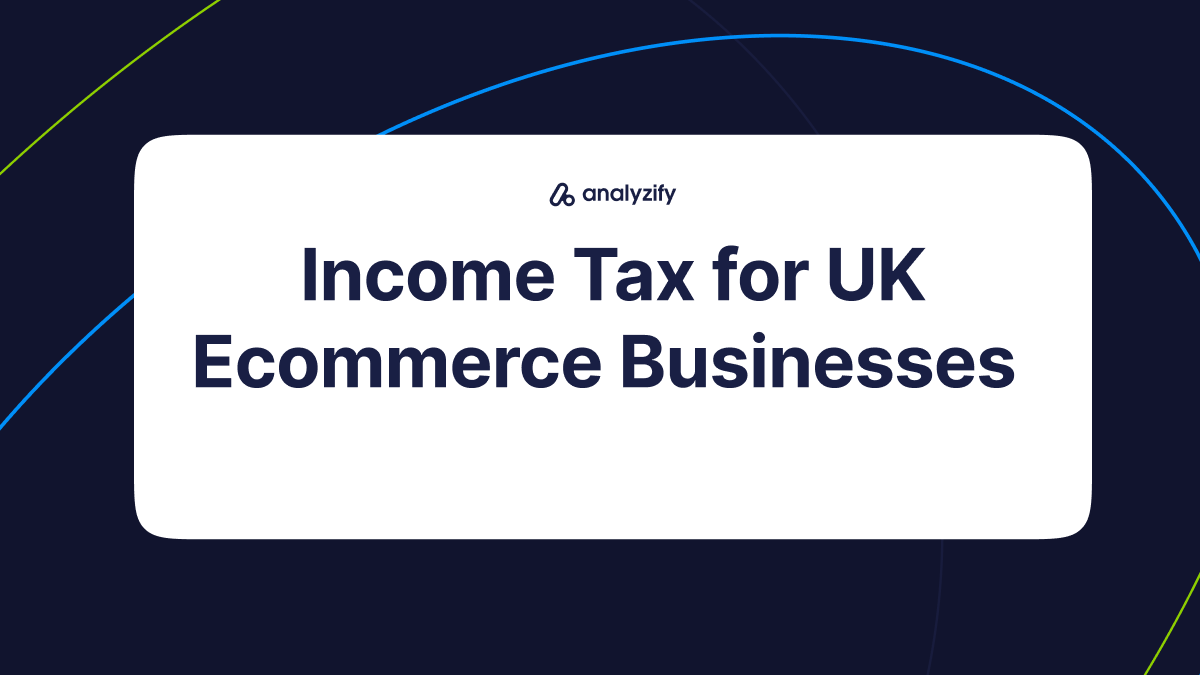
National Insurance (NI) is a tax system in the UK that contributes to state benefits, including the state pension, bereavement benefits, and maternity leave.
Although its name suggests it might be similar to insurance products like house or car insurance, NI is more akin to income tax, as it is based on earnings over a certain threshold.
Paying National Insurance qualifies individuals for specific state benefits that may support them in the future.
Classes of NICs (Class 1, 3, and 4)
National Insurance Contributions (NICs) are categorized into different classes, each with its own rules and applicability:
Class 1 NICs: Paid by employees and employers.
- Employees: Pay 8% on weekly earnings between £242 and £967, and 2% on earnings above £967.
- Employers: Pay 13.8% on earnings above £175 per week.
Class 3 NICs: Voluntary contributions.
- Paid to fill gaps in an individual’s National Insurance record, ensuring they qualify for state benefits like the state pension. The current rate is £17.45 per week.
Class 4 NICs: Paid by self-employed individuals based on profits.
- 9% on annual profits between £12,570 and £50,270.
- 2% on profits above £50,270.
Contributions for Employers and Employees
Employees: Employees pay Class 1 NICs directly from their wages, which are managed by their employer through the Pay As You Earn (PAYE) system.
- Employees contribute 8% on earnings between £242 and £967 per week, and 2% on earnings above £967.
Employers: Employers also contribute to NICs for their employees, paying 13.8% on earnings above £175 per week.
Contributions for Self-Employed Individuals
Self-employed individuals are responsible for Class 4 NICs:
Class 4 NICs: Self-employed individuals pay 9% on annual profits between £12,570 and £50,270, and 2% on profits above £50,270.
Key Points to Remember
- Thresholds: Understanding the earnings thresholds for each class of NICs is crucial to ensure correct payments.
- Employee Contributions: Managed through the PAYE system, making it straightforward for employees.
- Self-Assessment for Self-Employed: Self-employed individuals must calculate and pay their NICs through the self-assessment tax return.
- Voluntary Contributions: Class 3 contributions can be made to fill gaps in the NI record, ensuring eligibility for state benefits.
Changes in 2024
In April 2024, Class 2 NICs has been abolished. This means self-employed individuals are no longer need to pay the flat rate of £3.45 per week, simplifying the NICs system for them.
Examples
Employee Earning £35,000 per Year:
- Weekly earnings: Approximately £673.
- NICs Calculation: 8% on earnings between £242 and £967.
- Total NICs: £673 - £242 = £431; 8% of £431 = £34.48 per week.
Self-Employed Individual with £60,000 Annual Profit:
- Class 2 NICs: £3.45 per week.
- Class 4 NICs: 9% on £37,700 (profits between £12,570 and £50,270) = £3,393, and 2% on £9,730 (profits above £50,270) = £194.60.
- Total NICs: £3.45 * 52 + £3,393 + £194.60 = £3,570.40 annually.
National Insurance Contributions are an essential part of the UK tax system, providing eligibility for state benefits.
Understanding the different classes of NICs, the thresholds, and the rates is crucial for both employers and self-employed individuals to ensure compliance and proper planning for future benefits.
By staying informed about upcoming changes and managing contributions effectively, businesses and individuals can optimize their financial planning and benefit from the state-provided security.
International Considerations for UK Ecommerce Businesses
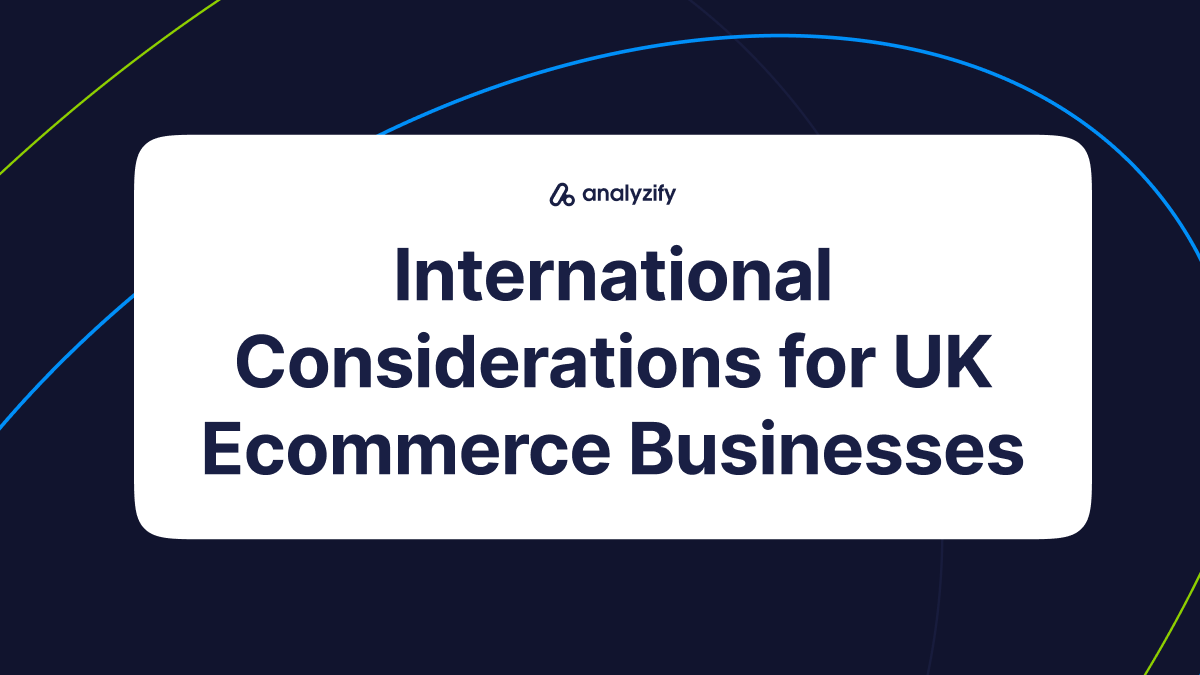
When selling to customers outside the UK, ecommerce businesses need to be aware of various VAT implications and regulatory requirements. For non-EU countries, goods are typically zero-rated for VAT purposes.
This means that while the VAT rate is 0%, these transactions must still be recorded and reported to HM Revenue and Customs (HMRC).
- Keep accurate records of all sales, including invoices and shipping documentation.
- Ensure compliance with VAT regulations for international transactions.
Import and Export Regulations
Import and export regulations play a significant role in international ecommerce. When importing goods into the UK, businesses may be required to pay import VAT and customs duties.
The exact rates and requirements depend on the nature and value of the goods being imported.
Conversely, when exporting goods, especially to the EU, businesses need to ensure they comply with the destination country’s import regulations.
This may involve registering for VAT in that country, providing appropriate documentation, and understanding any local taxes or duties that may apply.
- Understand the import VAT and customs duties for goods brought into the UK.
- Comply with the import regulations of the countries you are exporting to.
Double Taxation Agreements
Double Taxation Agreements (DTAs) are treaties between two countries designed to prevent the same income from being taxed twice. The UK has DTAs with many countries, which can be beneficial for ecommerce businesses operating internationally.
These agreements often provide relief from double taxation by allowing businesses to claim tax credits or exemptions on income that has already been taxed in another country.
- Utilize DTAs to reduce the overall tax burden.
- Avoid paying tax on the same income in multiple jurisdictions.
Brexit Implications on Taxation
Brexit has brought significant changes to how UK ecommerce businesses deal with VAT and customs when trading with EU countries.
Post-Brexit, the UK is no longer part of the EU VAT system, which means different rules apply for selling goods and services between the UK and the EU. For goods, this often involves additional customs checks and potential tariffs.
Businesses need to register for VAT in each EU country where they exceed the distance selling threshold. Additionally, the Northern Ireland Protocol means that Northern Ireland follows EU VAT rules for goods but UK VAT rules for services, adding another layer of complexity.
- Monitor and adapt to changes in VAT and customs regulations post-Brexit.
- Register for VAT in EU countries where you exceed the distance selling threshold.
Key Points to Remember
- Accurate Records: Keep detailed records of all international transactions, including sales, imports, and exports.
- Understand Local Regulations: Familiarize yourself with the import and export regulations of the countries you are trading with.
- Leverage DTAs: Utilize Double Taxation Agreements to reduce tax liabilities.
- Stay Updated on Brexit Changes: Continuously monitor any changes in regulations due to Brexit and adjust your business practices accordingly.
By understanding these international considerations, UK ecommerce businesses can navigate the complexities of global trade, ensure compliance, and optimize their tax strategies.
FAQs on UK Tax Rules for Ecommerce Businesses
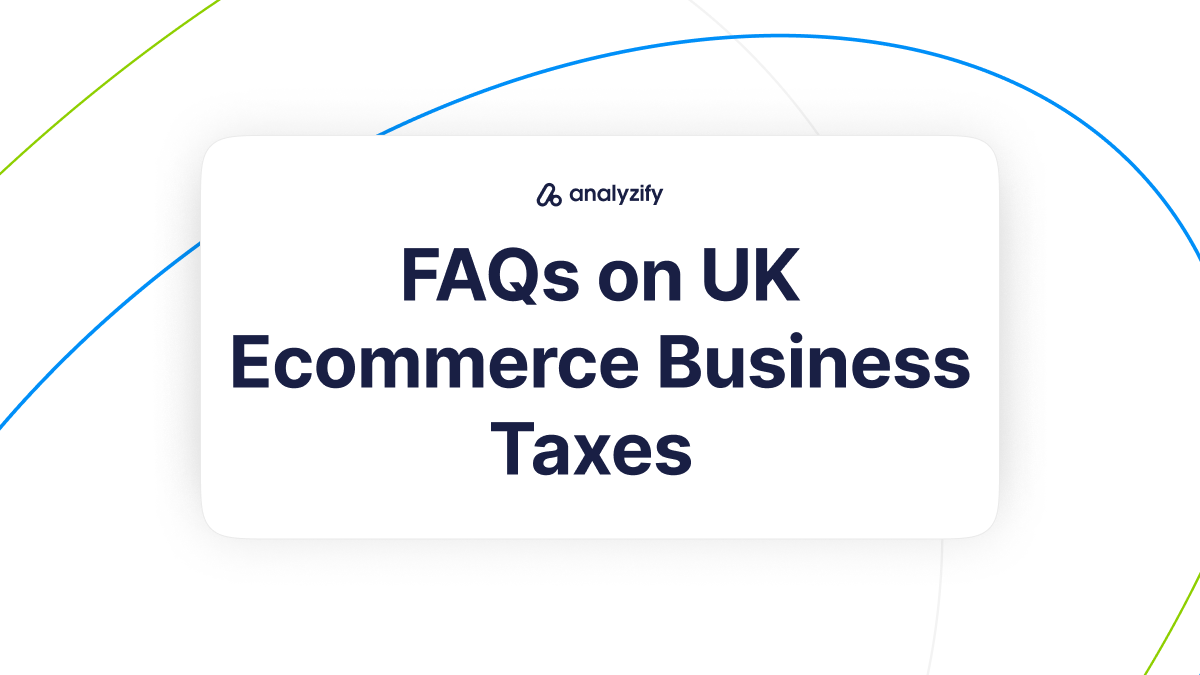
What is Value Added Tax (VAT)?
VAT is a consumption tax levied on the sale of goods and services in the UK. It is collected by businesses on behalf of the government and paid to HM Revenue and Customs (HMRC).
When must a business register for VAT?
A business must register for VAT if its taxable turnover exceeds £85,000 per year. Businesses can also voluntarily register for VAT if their turnover is below this threshold.
What are the different VAT rates in the UK?
The UK has three VAT rates: Standard Rate (20%), Reduced Rate (5%), and Zero Rate (0%). Each rate applies to different types of goods and services.
What is Corporate Tax and how is it calculated?
Corporate Tax is a tax on the profits of companies. For ecommerce businesses, it is calculated based on the net profit made from online sales after deducting allowable expenses and reliefs.
What are the Corporate Tax rates for UK companies?
The current Corporate Tax rate for UK companies with profits under £50,000 is 19%. For profits over £250,000, the rate is 25%. For profits between £50,000 and £250,000, a marginal relief applies.
How do companies file Corporate Tax returns?
Companies must file their Company Tax Return (CT600) online using HMRC’s services or approved software. The return includes the company’s financial performance, taxable profit, and the calculated tax amount.
How do sole traders and partnerships pay Income Tax?
Income tax applies to the profits of sole traders and partnerships. They must file a Self-Assessment tax return to report their income and pay any tax due.
What expenses can sole traders and partnerships deduct from their Income Tax?
Allowable expenses for sole traders and partnerships include office costs, travel expenses, stock and materials, marketing and advertising, professional fees, use of home, and capital allowances.
What are National Insurance Contributions (NICs) and how do they apply to ecommerce businesses?
NICs are payments made by employees, employers, and the self-employed to qualify for state benefits. Employees pay NICs through their wages, while self-employed individuals pay NICs based on their profits.
How did Brexit affect VAT rules for ecommerce businesses?
After Brexit, UK businesses follow different VAT rules when trading with the EU. Northern Ireland follows EU VAT rules for goods and UK VAT rules for services, which is important for ecommerce businesses.
Glossary of Tax Terms for UK Ecommerce Businesses
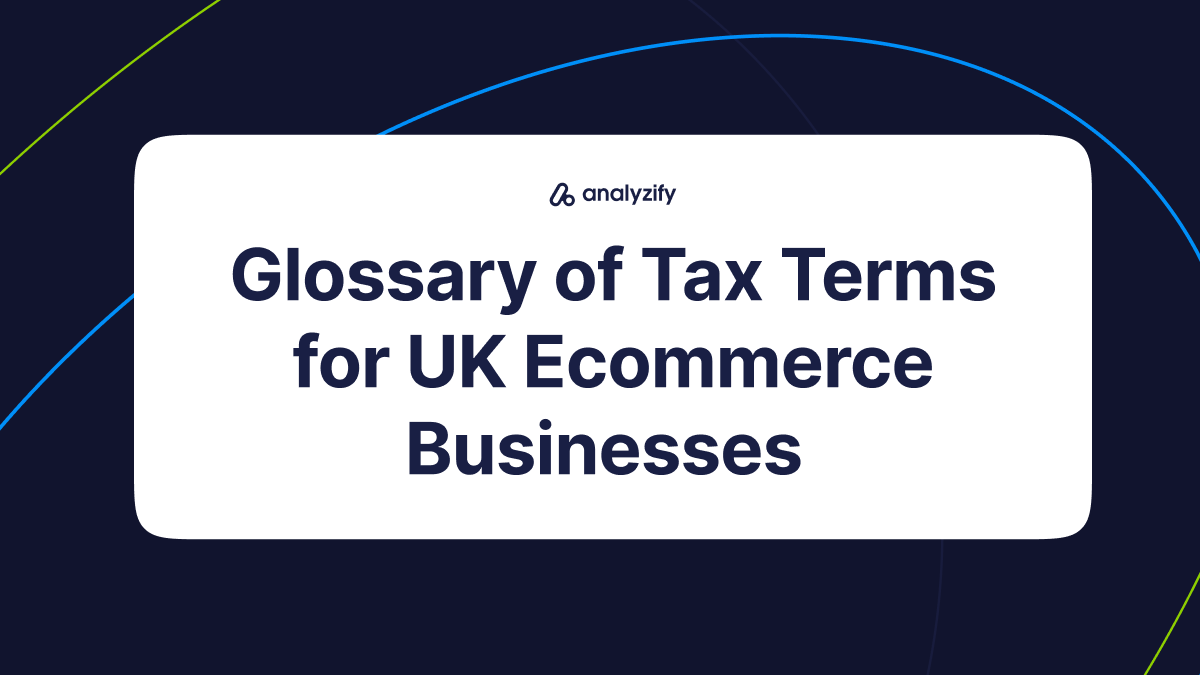
Annual Investment Allowance (AIA): A tax relief that allows businesses to deduct the full value of qualifying assets (like equipment and machinery) from their profits before tax, up to a certain limit.
Capital Allowances: Deductions businesses can claim for depreciation of certain assets, such as machinery and equipment, to reduce taxable profit.
Corporate Tax: A tax on the profits of limited companies and other organizations, calculated and paid annually to HMRC.
Customs Duty: A tax imposed on imports and exports of goods, used to control the flow of goods and generate revenue for the government.
Distance Selling Threshold: The sales limit at which a business must register for VAT in an EU member state if selling goods to consumers there. As of now, the threshold is €10,000 across the EU.
Double Taxation Agreement (DTA): A treaty between two countries to prevent the same income from being taxed twice, allowing businesses to claim tax relief on income taxed in another country.
Flat Rate Scheme (FRS): A VAT scheme that allows small businesses to pay VAT as a fixed percentage of their gross turnover, simplifying VAT calculation and reporting.
Import VAT: VAT charged on goods imported into the UK from outside the EU, calculated on the total value of the goods plus shipping and any applicable customs duty.
Input VAT: The VAT that businesses pay on purchases of goods and services, which can be reclaimed from HMRC if the business is VAT-registered.
National Insurance Contributions (NICs): Payments made by employees, employers, and the self-employed to qualify for certain state benefits, including the state pension.
One-Stop Shop (OSS): A scheme that simplifies VAT reporting for businesses selling goods and services across the EU, allowing them to declare and pay VAT in one EU member state.
Output VAT: The VAT that businesses charge on sales of goods and services, which must be paid to HMRC if the business is VAT-registered.
Pay As You Earn (PAYE): A system for collecting income tax and National Insurance from employees’ wages directly through their employer.
Self-Assessment: A system used by HMRC to collect income tax from individuals and businesses. Taxpayers must file a tax return each year detailing their income and expenses.
Standard VAT Rate: The default rate of VAT applied to most goods and services in the UK, currently set at 20%.
VAT (Value Added Tax): A consumption tax added to the price of most goods and services sold in the UK. Businesses collect VAT from customers and pay it to HMRC.
VAT Annual Accounting Scheme: A VAT scheme allowing businesses to file one VAT return per year instead of quarterly, helping to simplify the VAT process.
VAT Cash Accounting Scheme: A VAT scheme where businesses pay VAT to HMRC only when they receive payment from their customers, rather than when they issue invoices.
VAT Margin Scheme: A VAT scheme for second-hand goods, antiques, and collectibles, where VAT is calculated on the difference between the purchase price and the selling price.
Zero-Rated Goods: Goods and services that are taxable but the VAT rate is 0%. Examples include most food and children’s clothing.
By understanding these common tax-related terms, UK ecommerce businesses can better navigate the complexities of the tax system, ensuring compliance and optimizing their financial strategies.
Bonus Content: Here some other content that you might be interested in:































